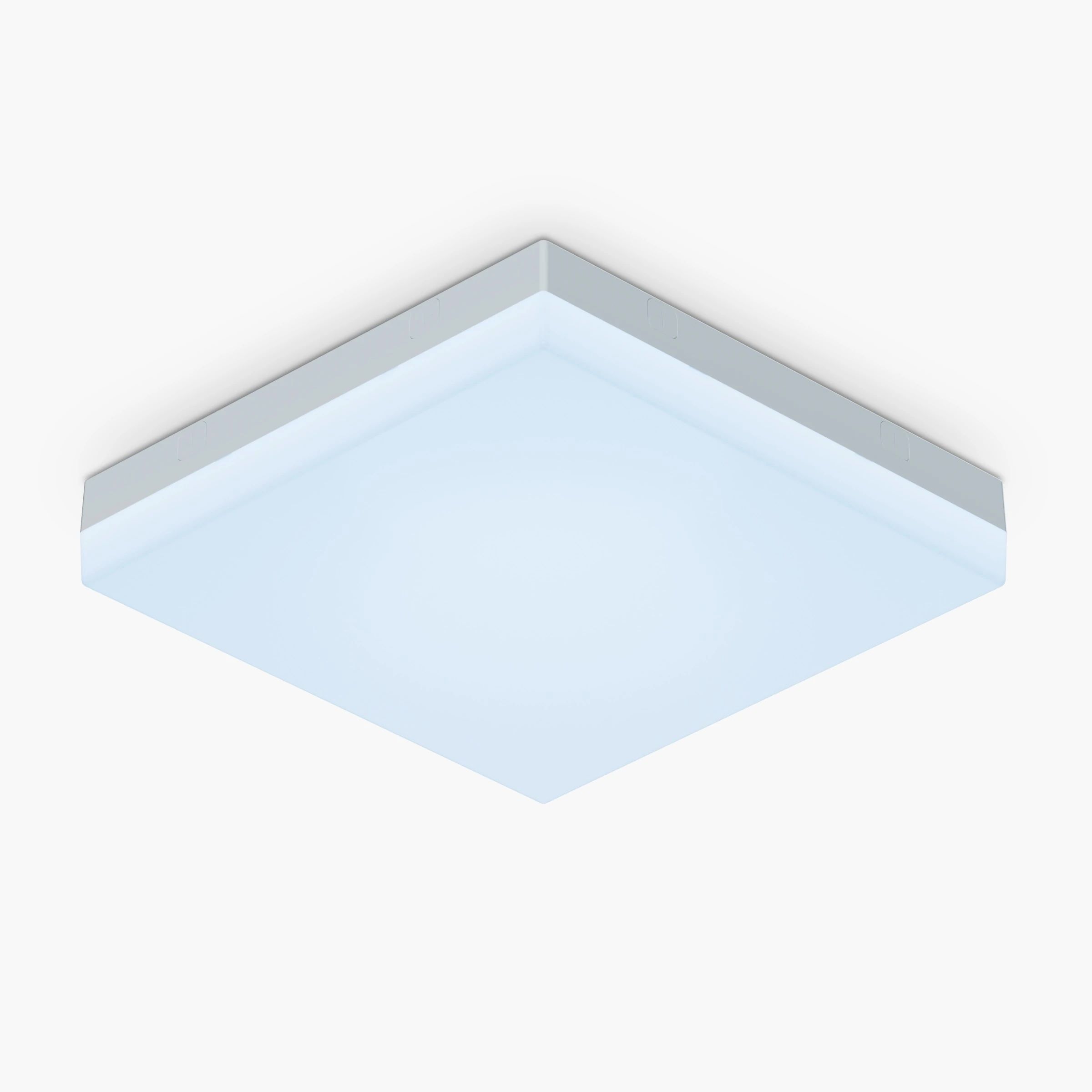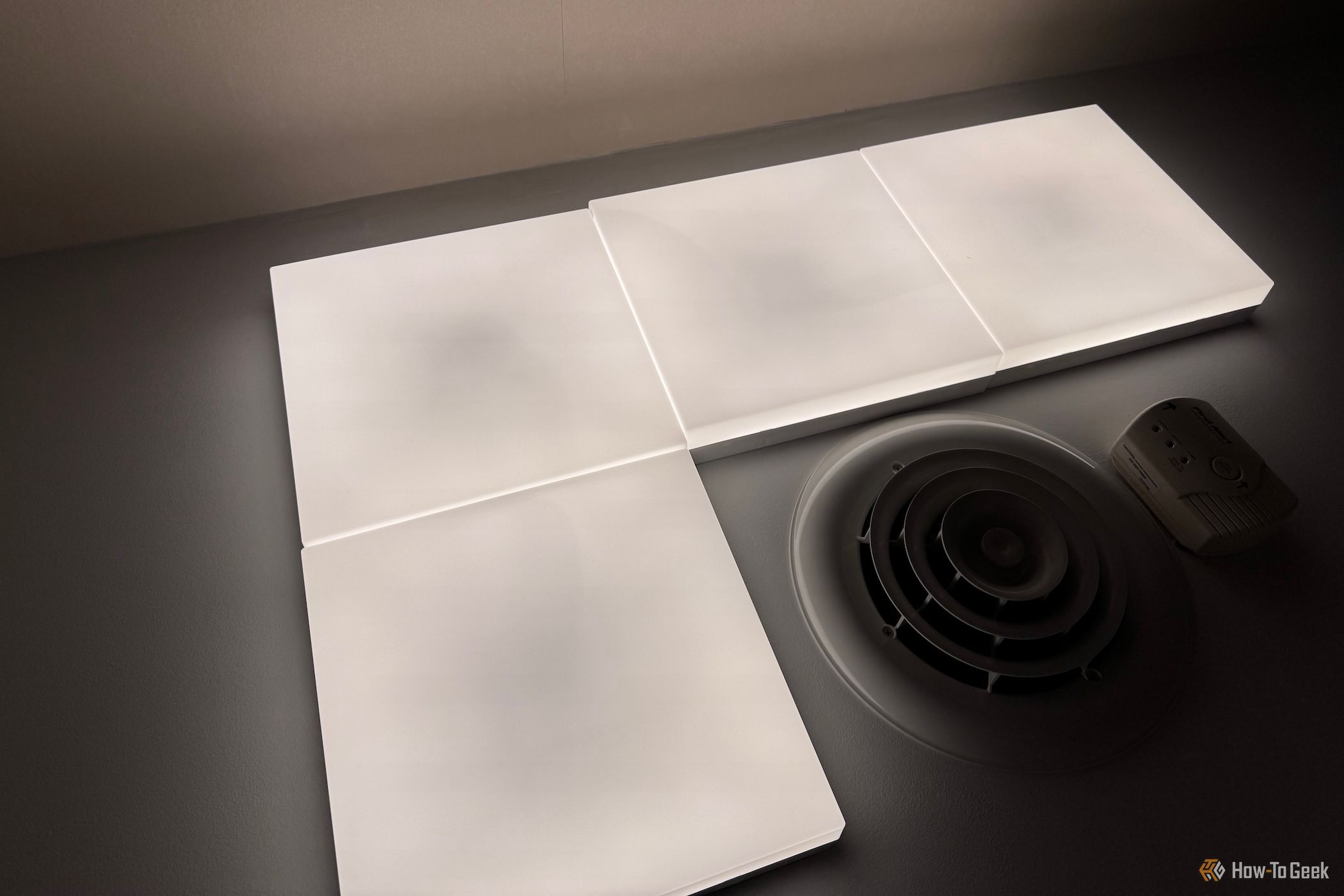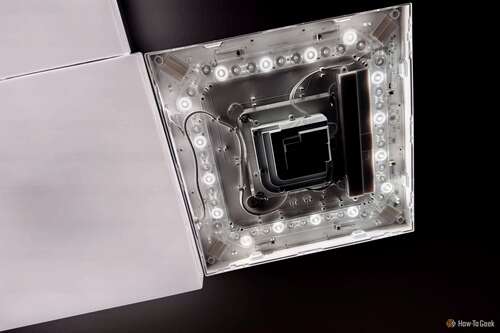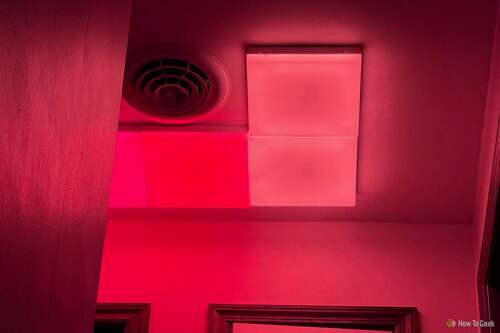Key Takeaways
- Nanoleaf Skylight offers 16 million color options for customizable, natural-looking ceiling lighting at home.
- The Nanoleaf app allows control of the ceiling panels and integrates with various smart home ecosystems.
- Although installation can be challenging and individual panels are pricey, the high-quality LED product might be worth the investment.
The Nanoleaf Skylight modular lighting system allows you to add multiple colors to your ceiling anywhere in your home. Over time, you can expand the footprint by adding new ceiling panels. Instead of cutting a hole in your roof, this might be a better way to add natural-looking lighting to dim areas of your home.

Nanoleaf Skylight
The Nanoleaf Skylight system includes lighting panels you add to your ceiling. You can control these lights individually or as a group with the Nanoleaf app for iOS and Android.
- Brand
- Nanoleaf
- Integrations
- Apple Home, Google Home, Samsung SmartThings, Amazon Alexa, IFTTT, Razer Chroma
- Hub Required
- No
- Music Reactive
- Yes
- Multicolor Capable
- Yes
- Service Life
- 25,000 hours
- Voltage
- 100-240V AC,50/60HZ
- Type
- Ceiling lights
- Connectivity
- WiFi (2.4GHz b/g/n)
- Price
- From $249.99
- Brightness
- 1400 lumens
- Control Methods
- App
- Light Colors
- 16M+ Colors with Dynamic Scenes
- Nanoleaf app is plenty capable
- You can add up to 99 ceiling panels
- 16 million colors to choose from
- “Basic” installation is still pretty involved
- Individual panels are expensive
- The app has a learning curve
What It Does: Familiar, But Different
If you’re a smart home device user, you probably already know about Nanoleaf. The consumer electronics company has been making smart lighting products for over a decade. Until recently, these products, such as the Nanoleaf Shapes, have consisted of LED light panels placed on the wall in a design of your choice. The light panels can change color and respond to touch, music, and voice commands.
The Nanoleaf Skylight works the same as previous Nanoleaf products. However, the panels attach to the ceiling instead of a wall using existing power wires. Once connected, you can control the panels using the official Nanoleaf app. Each Nanoleaf Skylight panel provides 1,400 lumens and supports cool and warm whites (2,700K to 6,500K) and over 16 million colors.
Each square Nanoleaf Skylight panel measures 6.1 inches (or 15.5 centimeters) on each side. Although it would be costly to do so, you can attach as many as 99 panels to the same setup. Nanoleaf Skylight starter packs are available with three, four, six, nine, or 12 panels, starting at $250. You can purchase individual panels for $70 each.
Set Up: Depends on Your Skill Set
One of the reasons I have often turned to Nanoleaf for my smart lighting needs is the easy setup. No matter the product, the setup has always remained the same. Each plastic panel connects using mounting plates, and sticky tape is provided to attach the panels to a wall. At least one of those panels includes a controller that ultimately attaches to a power supply unit, which you connect to an electrical outlet.
The Nanoleaf Skylight is entirely different. Like other ceiling lights, it requires hardwiring. To get started, you must connect the main panel to your existing electrical wires in the ceiling. The other panels connect through the provided linkers. Nanoleaf includes everything you need to complete the setup in a starter pack, including the panels, screws, anchors, power wires, linkers, and binding posts.
Nanoleaf recommends “basic electrical experience” for installation. As someone who gets a little bit nervous when electrical wires are involved, I asked for assistance from my father, who is a retired electrician. It took him about an hour to install four Nanoleaf Skylight panels at the top of my stairs. After installing the panels, he concluded that most everyday homeowners probably shouldn’t try to install these panels. He recommends hiring a contractor or electrician to get the job done. If you insist on installing the Nanoleaf Skylight yourself, be sure to turn off the power of your primary circuit. It’s something Nanoleaf—and my dad recommends.
Like other Nanoleaf products, you can arrange the Skylight panels in any way. For example, you can position them in a line, arrange them in a box, etc. If you need suggestions on where to place them, check out the app’s design recommendations.
The App: And So It Begins
Once your Nanoleaf Skylight panels are hooked up and lit, you can begin experiencing them in your home. You need to download the Nanoleaf app for iPhone or Android to control the panels. Once the app and panels are connected, you can take it further and use them using your favorite smart home ecosystem, such as Apple Home, Google Home, Amazon Alexa, or Samsung SmartThings. You can also control the lighting through voice control using Amazon Alexa, Google Home, and Apple Siri.
In its simplest form, the app allows you to change and dim your panels using one or many colors. Nanoleaf lighting also works with downloadable or user-created scenes, which consist of different light colors that change to match a theme. The scenes are great for creating a mood or matching the time of day.
Like other Nanoleaf products, the Nanoleaf Skylight is also programmable. For example, you can turn the lights on or off depending on the time of day and whether someone is home or in the room. You can select a music-related scene so that panel lighting changes as songs are played. Indeed, these rhythm scenes create a dynamic, unique experience. However, it’s not necessarily one that everyone in your home will enjoy.
As you can see, the Nanoleaf app has a lot of functionality. Unfortunately, using it can sometimes be confusing since there is so much to see. My advice: if you’re using something like Apple Home or Google Home, use it instead to control your Nanoleaf lights. Neither of those apps allows the full capabilities that the Nanoleaf does, but that isn’t necessarily bad, especially if you don’t plan on using Nanoleaf scenes. Apple and Google’s options offer more simplification.
Should You Buy the Nanoleaf Skylight?
There are a few drawbacks to the Nanoleaf Skylight, starting with the price. Anyone who has ever purchased or considered purchasing a Nanoleaf system knows the company charges premium prices that go higher and higher the more panels you get. The Nanoleaf Skylight is no exception. The panels are worth it, however. Then there’s the issue of installation. These panels aren’t nearly as easy to set up as other Nanoleaf products. If you plan on doing the installation yourself, plan on spending some time on a ladder looking up at your ceiling. Finally, there’s the Nanoleaf app, which could be easier to use. Therefore, expect a learning curve.
Beyond these points, I have no problem recommending the Nanoleaf Skylight to any homeowner looking for a smart home lighting solution. It’s a high-quality LED product rated to last for 25,000 hours. Better still, you can start small and add panels later as your needs grow.

Nanoleaf Skylight
The Nanoleaf Skylight system includes lighting panels you add to your ceiling. You can control these lights individually or as a group with the Nanoleaf app for iOS and Android.
- Brand
- Nanoleaf
- Integrations
- Apple Home, Google Home, Samsung SmartThings, Amazon Alexa, IFTTT, Razer Chroma
- Hub Required
- No
- Music Reactive
- Yes
- Multicolor Capable
- Yes
- Service Life
- 25,000 hours
- Voltage
- 100-240V AC,50/60HZ
- Type
- Ceiling lights
- Connectivity
- WiFi (2.4GHz b/g/n)
- Price
- From $249.99
- Brightness
- 1400 lumens
- Control Methods
- App
- Light Colors
- 16M+ Colors with Dynamic Scenes
- Nanoleaf app is second-to-none
- Can add up to 99 ceiling panels
- 16 million lights to choose from
- “Basic” installation isn’t basic
- Individual panels are expensive




